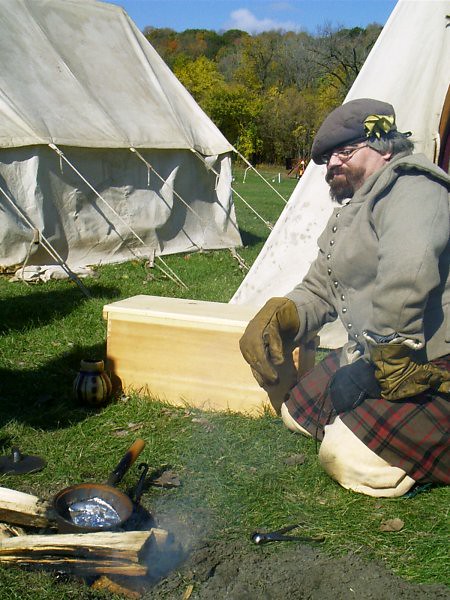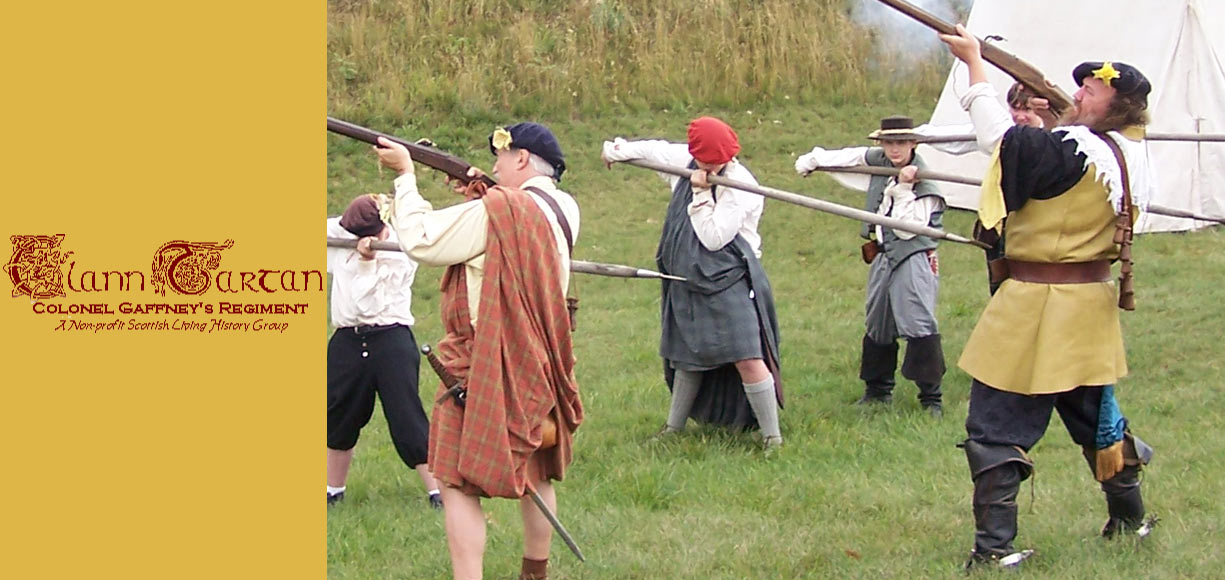Early Scottish Firearms
Until the late 1700’s there was relatively little production of iron in Scotland, therefore weapons, or raw material for them had to be imported. Based upon armorer’s signatures and guild marks most imported weapons seem to have come from Germany, the Low Countries and a few from Spain. Imported iron from England and Sweden was used to produce a large quantity of distinctive Scottish weapons. These designs are of interest not only because they are distinctive, but also because they preserved, as late as the 1700’s, Celtic forms of decoration, which had died out during the mediaeval period in the rest of Europe. The development of these weapons evolved from Dutch pieces imported in the 1500’s and began primarily in towns along the eastern seaboard of Scotland and moving west, and north to the clan armorer’s of the Highlands.
Let’s define firing mechanisms first, so we know what we are talking about. The earliest "locks" were matchlocks with a lever, or spring loaded arm the would set off the gun powder by touching it with a burning piece of rope, or "match." The obvious problem with a matchlock is keeping match burning in wet weather, not to mention blowing yourself up with a lit match and loose gunpowder.
The wheel lock solved the problems of the matchlock by 1520, but it required a complex and therefore expensive mechanism. A spring-loaded steel wheel would spin against a piece of flint, creating a spark in the same way as a modem cigarette lighter. It also required a "spanner" - a key to wind up the spring each time you fired it. Loose the spanner and ye’re oot of luck laddie.
Two types of flintlocks were invented in the late 1500’s in two different locations. Legend has it that in both countries they were invented for the same reason. Robbers did not want to give themselves away at night with the light from the burning match of a matchlock, and wheel locks were too expensive.
The "snaphaunce," was a Dutch invention. When you pulled the trigger the pancover slid away to expose the gunpowder. At the same time a piece of flint hit steel, creating a spark and igniting the powder.
The Spanish invented the "miquelet" lock at about the same time. This evolved to become simply known as the "flintlock." It replaced the Dutch snaphaunce in time because it was simpler in design. The steel and the pancover protecting the gunpowder were made in one piece that was knocked out of the way when struck by the flint.
The snaphaunce is the earliest form of Scottish-made firearm identifiable. (Matchlocks were certainly made, but no known Scottish examples survive.) These Scottish snaphaunces date from the 1500’s to about 1675, and along with the matchlock, would be the most common firearm during our period of focus. The finest examples have barrels, which are ornamented by molded cross bands or longitudinal fluting, and are inlaid with silver. They vary in length from 3’ 1O to 6’10". The smaller weapons termed the "arquebus" or "hagbut" and the big ones, fired from rests, called "muskets." The stocks gracefully curve back to thin, narrow butts and were elaborately carved with fluting, leaf scrolls and animal forms. Metal mounts were of silver or brass and engraved with rosettes or running leaf scrolls. Triggers tended to be lobe-shaped, or fitted with a ball of silver, or brass, usually with no trigger guard. This style seems to have died out in the late 1600’s when the flintlock brought with it a stock of the conventional European pattern.
Source: A Treatise on Scottish Hand Firearms of the 16th, 17th and 18th Centuries, by Charles E. Whitelaw

